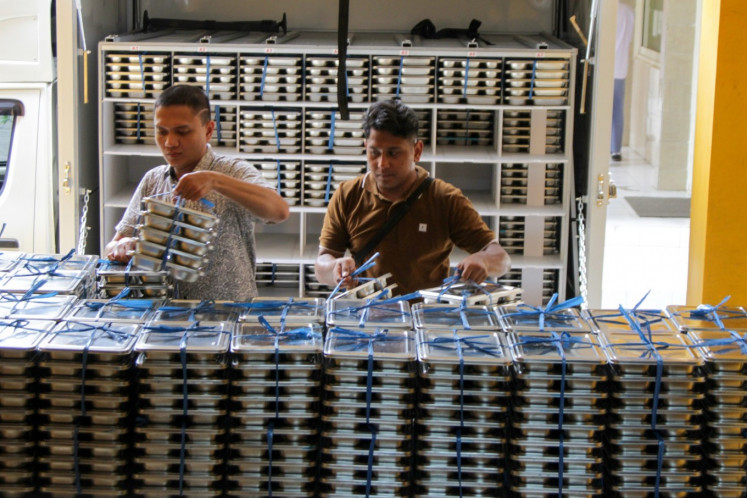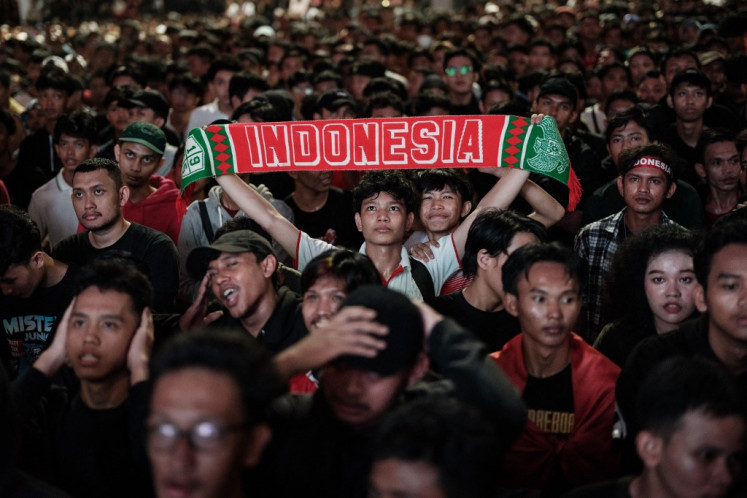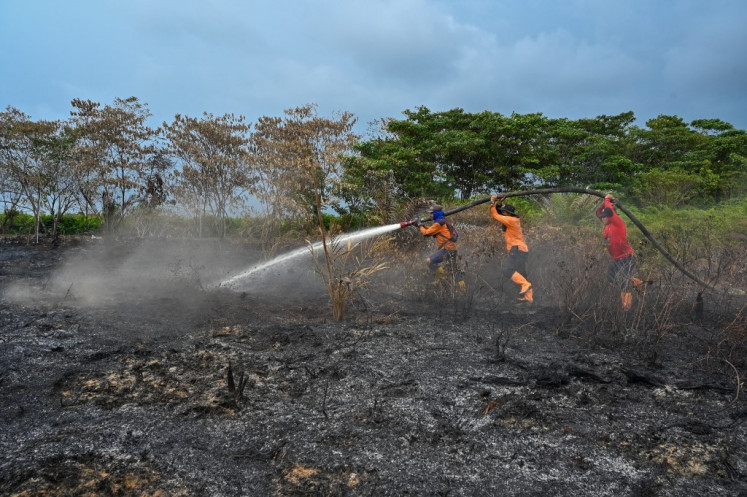Quo vadis Jakarta city development
Over the past few months there have been a number of articles and pronouncements over the future of this city of ours, a lack of action on infrastructure, flooding, and so on
Change text size
Gift Premium Articles
to Anyone

O
ver the past few months there have been a number of articles and pronouncements over the future of this city of ours, a lack of action on infrastructure, flooding, and so on. The recently held first World Delta Summit hosted by the City of Jakarta highlighted most of the problems that the city and other world deltaic megacities are going to face in the years ahead.
Three points that need to be balanced for life equilibrium are our supplies and usage of water, food and energy. The matter has been compounded by the extraordinary global growth in population over the past 70 years.
The other significant ongoing event is the rapid urbanization of the world’s population with urban residents projected to increase to 6 billion by mid-century, completely changing the urban-rural balance. In number terms this means that most of the increasing population will be city bound. The impact on most of the world’s major conurbations, such as Jakarta, will continue to increase, and for the majority which are not yet prepared to face the highly complex problems under the headings of water, food and energy (including transportation), the future could be bleak.
An interesting positive way of looking at the requirements for future cities is to see how these can be addressed in the concept “Cities as a Force for Good” (CFG).
Many cities have problems, especially in the newly industrializing countries, with both water supply and sanitation, and Jakarta is no exception. While water supply does generally receive attention, albeit inadequately, treatment of dirty water and solid waste has been seen as tomorrow’s problem. It no longer is, with health at risk from both air and water-related pollution, and the cost to business is very significant. A complex but rational plan is required to look to the future as the city expands while concurrently trying to solve today’s problems.
Fundamental to the growing idea of building and maintaining future cities, the CFG concept stresses the need to have a sound long term plan for water, supply and treatment, with credible achievement milestones on the way. The concept has evolved from attempts to build sustainability into the planning equation, and the essential challenges CFG are:
How can a city’s water infrastructure be re-engineered to restore within reason the ecosystem services in an acceptable manner to reflect how the land responded before the presence of the city?
How can urban infrastructure be re-engineered to enable the city to act as a force for good, compensating for the sometimes negative, although often necessary impacts of remoter interventions, such as, for example, the non-urban structures of dams and diversions for agricultural irrigation?
How are these issues to be addressed for Jakarta, currently struggling under an unsustainable approach to its water supply, with continued ground water extraction exacerbating the continuing problem of sinking? Some parts of northern Jakarta have sunk more than 2 meters over the past 30 years.
As highlighted at the World Delta Summit, in order to protect the huge investment that comprises the city’s assets, an offshore seawall is required against seawater inundation taking note that much of Holland has been living successfully well below sea level for centuries. Naturally their advice is sought over what Jakarta should do.
The schematic diagram above depicts how the city might divide up its water supply needs in the future, taking benefit from an offshore protection dyke. The diagram indicates how the city might draw its water supply. To the south, the groundwater flows should allow supply to continue through well extraction, particularly if that taken from the central area and any points north were phased out; this should occur on an accelerating basis. In the central area the current efforts to expand the distribution from surface sources should continue, albeit improvements to the bulk supply are needed.
However, with the construction of a dyke there is the opportunity to start creating fresh water reservoirs in lagoons behind the dyke, once the sea water has been pumped and replaced by fresh, a procedure already understood.
This would then provide the relatively undeveloped north area of the city its own source of raw water and the designs for its supply to the commercial and domestic requirements of this area should naturally include for the increasing trend to install schemes for the capture and reuse of waste water. This is something on which Singapore is devoting considerable sums of money in research as well as application, and opens up all kinds of opportunities for modern, developing approaches to efficient design and environmentally friendly living conditions.
Overall the city’s land area has been largely built on, with perhaps only 25 percent relatively undeveloped, with much of this to the north. There is much to be done to improve the energy efficiency, and reduce the future demand increases on central fossil-fuel power supply, of the many public and commercial buildings already existing — retrofitting. There are methods for this already evolving in other countries that can be adapted for use here. For new structures, especially to the north, designs should include, for application of energy efficiency, “green” energy sources, such as solar, including use in the design of windows.
Both water and power considerations can be integrated into a masterplan following the new Green Building Code, with energy use balance, and application of comparatively new concepts to deal with solid waste, for example as fertilizer, and remove the negative impact this has on groundwater. There is an opportunity to integrate up-to-date systems in the “new” city to the north.
Planning for megacities must look at the concept of establishing sub-city communities to cater for 200,000 – 500,000 people, especially in the north which should be of interest to private sector developers. Each would be self-contained with efficiency in use of water and energy, wide areas of parkland, with plenty of trees and shrubs, and recreation facilities, and up-to-date low pollution transport links, as could be provided with the MRT and a good monorail network within and between the subcities, in tandem with cleaner road vehicles. Major primary road links should be kept to the periphery and have good links to the sea dyke toll road that is being envisaged.
In short North Jakarta offers an enormous opportunity to build a modern 21st century urban area for say 2 million residents and supporting commercial enterprises, and one where everyone will want to live.
There is much to do and adopting a policy of putting off today what might be done tomorrow no longer holds. Jakarta would sink in more ways than one. But the challenges are exciting and achievable.
A good sound strategy and a strong will to deliver would show an enormous difference, even within five years, and with Indonesia on a path to become the 10th-largest economy in 10 years, it is important that its capital city is seen as the beacon for outside investment and business.
The writer is president commissioner of Nusantara Infrastucture Tbk and also of Glendale Partners. He has degrees in civil engineering from Glasgow University and University of California at Berkeley. He has done some studies on urbanization problems in Indonesia for the Agency of National Development Planning (Bappenas).









